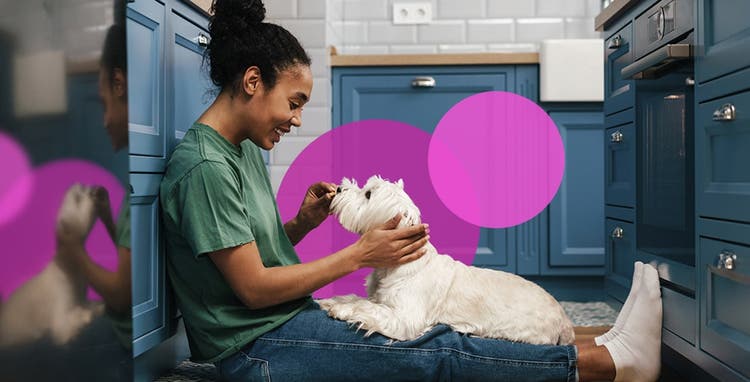Tips for introducing new pets to resident pets.
Most people are familiar with the old saying "fighting like cats and dogs" - which can make introducing a dog and cat in your home slightly nerve-racking. While some cats and dogs may learn to merely tolerate each other, others can become best friends. With a little patience, caution and awareness of potential issues, you can help teach your dog and cat to live in harmony.
How to Know If Your Dog and Cat Will Get Along
It's difficult to predict whether a dog and cat will get along, but personality plays a big role. If you have an aggressive dog or a skittish cat, proceed with caution when introducing another animal into your home. A playful dog will usually work well with a confident, energetic cat, while a laid-back cat tends to enjoy relaxing with another chilled-out companion.
How to Introduce a Dog to a Cat
When you've found your perfect match and it's time to bring your new pet home, preparing in advance can help make the introduction process much easier - and more harmonious.
Prepare Your Dog
- A dog's crate can provide a sanctuary of their own; if you haven't already crate-trained your pup, now is a great time to start.
- Brush up on your dog's obedience training by teaching or revisiting commands like "sit," "down" and "stay."
- Keep the dog treats handy for first interactions, and reward your dog for their calm, gentle behavior.
Prepare Your Cat
- Cats need space to roam without the potential stress of a dog. Create a secure, closed-off area with food, toys and scratching posts where your cat can retreat.
- Put your cat's food and water bowls out of the dog's reach. The same goes for your cat's litter box - some dogs like to eat cat feces!
During the First Meeting
- Allow several days for your cat and dog to sniff each other out. You can help by placing their empty beds in each other's spaces so they can acclimate to the scent of the other animal. You can also gently rub a towel on each pet and allow the other to smell it. You could even allow your dog to spend time in your cat's space, and vice versa, when the other pet isn't around.
- Next, conduct a brief, controlled meeting. Put the dog on a leash and introduce the two animals in a controlled environment where they both feel comfortable. It can help to let the cat roam during this time. Keep the initial meeting short - 10 minutes or less. As your dog and cat grow more comfortable with each other, you can extend their supervised interactions.
- Make sure to directly supervise the two together until they're comfortable with each other, which could take up to several months in some cases. Watch the body language of both pets. If your dog stiffens, whines or barks, and focuses intently on the cat, don't allow them near the cat. Some hissing from cats is normal, especially in early introductions, but proceed with caution if you see this behavior.
- Remember: Don't force it. We all want our dogs and cats to be best friends and spend countless hours cuddling each other, but sometimes it just won't happen. It's important to recognize your pets' individual needs and go at their pace.
How to Introduce a Puppy to a Cat
Part of the fun of having a puppy is their energetic and playful nature. A shy cat may not enjoy that energy as much as humans do. If you have a more timid cat, you may need to keep them separated from the puppy for a longer period until the puppy is socialized and understands boundaries.
How to Introduce a Kitten to a Dog
Safety is a big concern when it comes to kittens because they're so tiny. Even the most well-intentioned dog can accidentally injure a kitten while playing. A calm, older dog is often the best counterpart for a new kitten. If you have an energetic dog, consider keeping the two separated until the kitten is a few months old and has grown a little larger.
Patience Is Key
Just as a child can get jealous of a new baby, pets can get jealous of one another, too - and they may behave in unusual or destructive ways as a result. To help avoid this, try to give each pet equal attention and positive reinforcement so that neither feels left out. This is especially necessary for a pet that's used to being the only animal in the house and getting all of the attention.
Your cat and dog may develop a deep bond or they may not end up being best friends - and that's OK. By taking things slowly, you can still teach your pets to coexist in peace.
Related Articles

Puppy Parenting: Our Downloadable Guide
New puppy? Whether this is your first go-round or your fifth, we know that so much goes in to raising healthy, happy pups. Check out our free guide, also available to download!

New Cat or Kitten: Our Downloadable Guide
Thinking about adding a feline to the family? There are so many emotional, social and physical benefits to owning a cat. Check out our free guide, also available to download!





